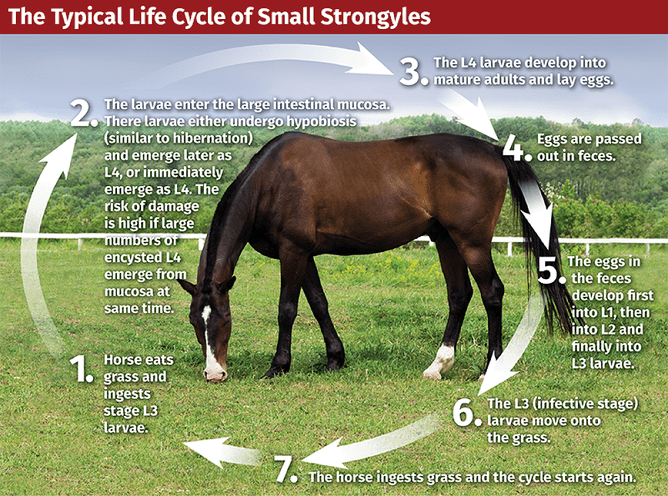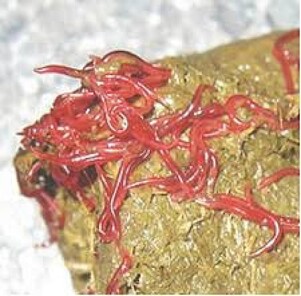Ensure that you are ahead of the game and get your horse’s level of parasitism assessed by performing a faecal egg count (FEC).
Spring has arrived, the days are getting longer and are slowly warming up and overnight temperatures are increasing. While this is the perfect recipe for grass growth, warmer, moist conditions are also the ideal environment for equine parasites to continue their lifecycle.
Both large and small strongyles (cyathostominae or red worms) along with ascarids (the large spaghetti-like white worms) can make a sudden emergence following a winter siesta in faecal balls in the paddock, or hibernation in the horse’s intestinal.
Apart from a few frosts, our winter has been kind and relatively mild. That, along with some warm, sunny days in August, is giving our parasite friends a head start.
Ensure that you are ahead of the game and get your horse’s level of parasitism assessed by performing a faecal egg count (FEC).This will give you an idea of your horse’s susceptibility to parasites and their level of innate genetic immunity and ability to resist parasite development. It will also help us guide you on the best drench programme to use.
Performing FEC tests at certain times of the year, when your horse would normally be due for drenching, can help determine if they are susceptible to parasitism/have low resistance and therefore require drenching on a regular basis. Or, if they are resistant and only require drenching once or twice a year pre-winter and spring.
Research* has shown that:
- 50% of horses are classed as low shedders and require only two treatments per year;
- 30% are classed as moderate, requiring three treatments per year;
- 20% fall into the high category, requiring four treatments per year.
While these horses may tolerate disease themselves, their shedding of high numbers of eggs over the pasture effectively contaminates the grazing sward for other more susceptible animals - particularly young animals that are yet to develop an immune response.
Drench resistance
Like other animal species (sheep, goats, deer and cattle), the emergence of drench resistance is becoming an increasing problem in horses. Up to 70% of equine properties in New Zealand have some degree of drench resistance.
Drug manufacturers are unlikely to develop a new drench family for horses in the future. Performing a Faecal Egg Count Reduction Trial (FECRT) 10-14 days after drenching your horse at the appropriate dose rate (remember to weigh or use a weigh tape on your horse), can determine if your drench is 100% effective.
Rotating drench families is advised, however, regular drench checks are still recommended to avoid the repeated use of drenches that are no longer effective.
Additional management of pastures through the use of cross grazing with other species, picking up manure, or rotational grazing with other species or crops is recommended to reduce the buildup of parasites on pasture.
Harrowing fields in Southland when we have a warm, temperate climate is not recommended unless the fields can be spelled for a minimum of three months.
Grazing fields with undrenched animals will help increase pasture refugia. Inoculating the pasture with eggs with a different drench resistance spectrum is advised.
VetSouth performs in-house FECs for horses and donkeys. We can help advise on pasture management, the correct drench type for your animal, and institute a programme to help ensure your horse doesn’t succumb to internal parasitism.
*Worm-Ed.com
- Heather Busby


